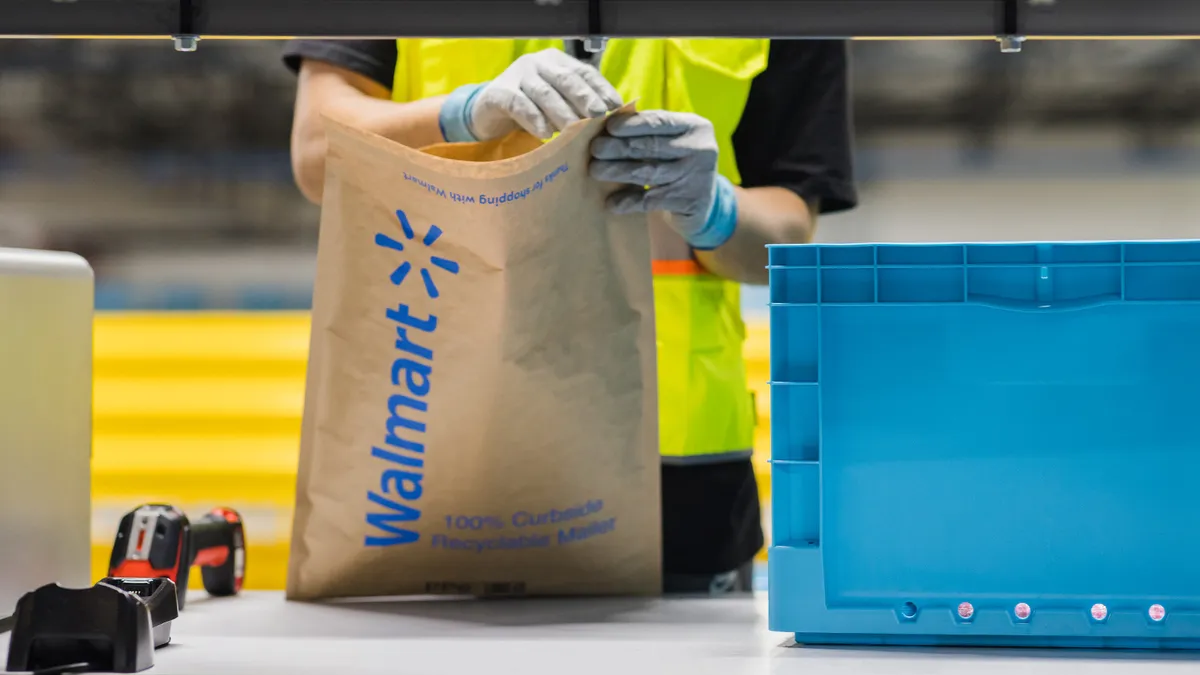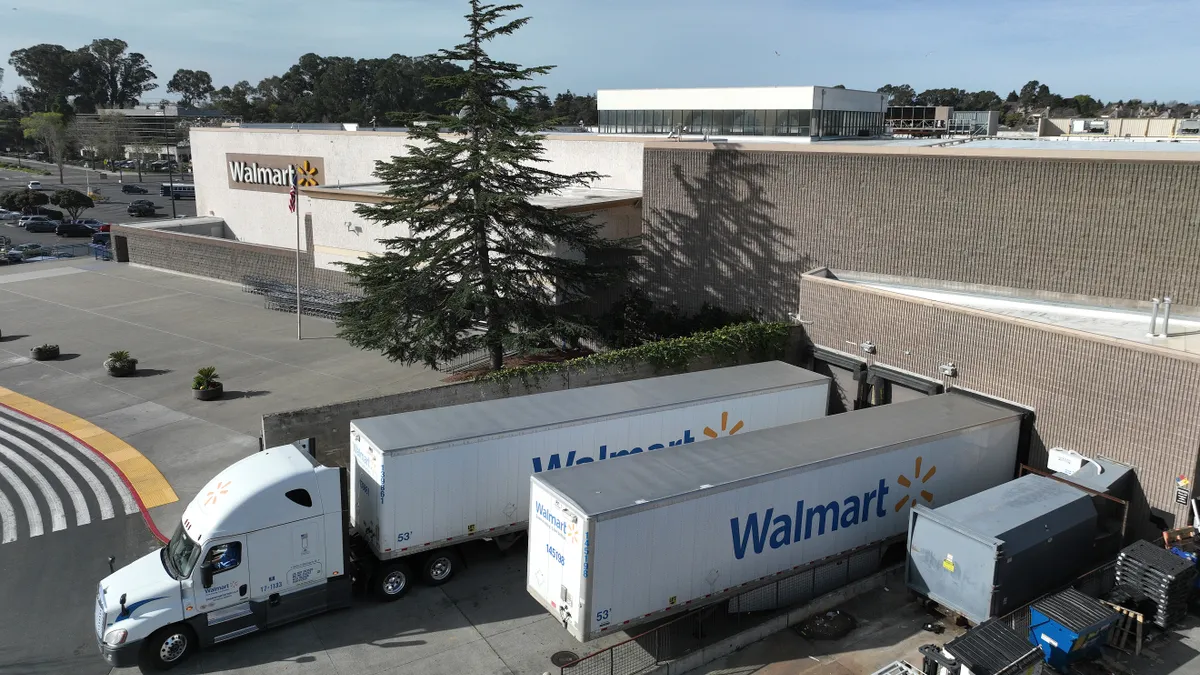Earlier this month, Bloomberg News reported that Amazon—already notorious for dismal working conditions at its white-collar offices as well as in its warehouses—has installed big-screen monitors to broadcast streams of images of workers fired after they were caught stealing on the job. The employees are seen in silhouettes, stamped with the words “Terminated” or "Arrested."
“That’s a weird way to go about scaring people,” James McCracken, who used to work at Amazon’s warehouse in San Bernardino, CA, told Bloomberg. “I think that’s offensive.”
Amazon has not publicly commented on the practice, its latest attempt to stymie theft in its warehouses, and did not return interview requests for this story. But the company's problem with employee theft is real, as it is for many businesses that use warehouses to store and move large numbers of items of varying levels of value.
Data is relatively scarce, but according to the University of Florida's 2011 National Retail Security Survey, employee theft from retailers (including warehouse thefts) amounted to close to $15.9 billion out of 2010's total inventory shrinkage of $35.3 billion, more than the $10.9 billion retailers lost from customer shoplifting. Judging by the images broadcast by Amazon, according to Bloomberg, the retailer has caught workers with all kinds of contraband: DVDs, iPads, beauty products, phone cases, video games, a microwave and even a fellow staffer’s lunch.
Amazon has already won a Supreme Court case that affirmed it wouldn’t have to pay warehouse workers waiting in long lines to be frisked for items they may have stolen, a process that workers say often takes up a lot of their time, sometimes in inclement weather. And it’s worth noting that at least one employee told Bloomberg that the new video-monitor practice didn’t bother them, while others said that working conditions and poor pay were bigger complaints.
But the setup seems disturbing—one worker called it “creepy”—and even Orwellian, raising questions whether Amazon's practices are commonplace... and whether they're effective.
Psychology is part of employee security
Behavioral psychology is definitely part of running a warehouse that is as immune as possible to employee theft. But experts told Retail Dive that the state of the art more often involves using what we’ve learned about human behavior to hire more honest people in the first place, then motivating them to do well.
With the right tools, screening techniques like psychometric tests and background checks make it possible to identify people who may be more tempted than others to steal. (Psychometric tests, which are offered and run by a variety of organizations that help businesses screen applicants, include "integrity" tests that assess attitudes and experiences related to honesty, dependability, trustworthiness, reliability, and pro-social behavior, according to the Society for Industrial and Organizational Psychology.)
While a retailer must make clear its company policy and consequences for theft, experts contend that broadcasting individual cases of stealing and punishment isn’t necessarily an effective deterrent, except to turn off many workers from sticking around—including those who’d never steal anything. And according to professional services network PricewaterhouseCoopers' latest report on loss prevention and shrink management, companies with higher employee turnover also experience greater employee theft.
"Employee turnover is a good indicator of risk trends," according to the report. "It’s intuitive that increased turnover can lead to increased shrink, and our survey findings confirmed there’s a link."
Among those loss prevention executives surveyed by PwC, the average employee turnover rate for organizations with high shrink (i.e., greater than 1.4%) was 45.1%, while for organizations with low shrink (less than 1.4%), the turnover rate was 33%. If that is causal and not just correlative, that could mean that Draconian working conditions at Amazon warehouses are making the retailer's problem worse.
Joseph Flahiff, who runs leadership, business process and management at consultancy Whitewater Projects, said that retailers should instead leverage peer pressure to motivate employees to more postive ends.
"Even more effective would be to encourage teams of people to accomplish things," he told Retail Dive. "Use the positive peer-pressure effect, encouraging one another to improve productivity because it helps us all out. Move from being self-focused and 'What’s good for me' to 'What’s better for the group and this society that we’re in.'"
While warehouse workers may be under pressure to work extremely efficiently, often for not a lot of pay, there are other ways to give their work meaning, experts said. For example, rather than focusing on the negative consequences of stealing, a company could broadcast accomplishments of individuals that others could aspire to. When the company is involved in—and involves its workers in—philanthropic pursuits that benefit society, workers appreciate it, especially those in the millennial generation, according to experts.
Could it backfire?
There’s another problem with broadcasting miscreants and their crimes. The tactic may have exactly the opposite of its intended effect, experts said.
Flashing instances of theft, even with the mortifying and ominous consequences accompanying words like “Terminated” or "Arrested," actually sends quite a different message than you might expect, studies show. “They’re trying something psychological, but they don’t realize that when you start to focus people on not doing bad things, they start to focus on those bad things,” Flahiff told Retail Dive. “By showing theft and talking about that and saying those things, they’re actually normalizing the behavior. It’s completely backwards.”
Flahiff cites the example of the Petrified Forest National Monument in Arizona, whose severe admonishments to visitors not to steal rocks created guilt trips and tainted many experiences there. When studies showed the warnings failed in preventing theft of the ancient stones, officials changed the signage to emphasize the importance of the geology and the history of the park instead.
Installing motivational signs rather than punitive ones and stressing the positive consequences of improved productivity could similarly demonstrate to workers that the company as a whole is a great place to work, with a valuable mission, Flahiff said.
“I would be really interested to see the statistical outcomes [of Amazon’s approach],” Flahiff said. “I would imagine that their loss goes up.”
Research is needed
One former Amazon worker told Bloomberg that the "only people that would have something to say about [the anti-theft monitors] is people that’s doing wrong. It’s just letting people know that you’re being watched.”
But Stephen A. LeMay, an associate professor of marketing and logistics at the University of West Florida, isn't so sure about that. LeMay has conducted many studies in organizational behavior, including research into supply chain dynamics, and like Flahiff, he would like to see data on tactics like those Bloomberg described at Amazon’s warehouse.
“[Amazon's approach is] relatively new, although many organizations do have security cameras one way or another,” LeMay told Retail Dive. “So somebody could see whether a warehouse worker steals or not. The difference is putting it up there for all to see, which does give it that ‘Big Brother’ sense.”
LeMay emphasized that retailers and warehouses should do the work upfront to hire people less likely to steal from them in the first place—something that can be accomplished through screening processes and background checks. The conundrum is that those types of prospective employees are likely to be turned off by the “Big Brother” approach, he said.
“Some research needs to be done whether that does damage to the employer/employee relationship,” LeMay said. “Not what the thieves think of that, but what the people who are not likely to be thieves think about that. We are moving into a climate over the [coming] years that says there’s going to be a shortage of workers, and that particularly applies to supply chain people."
LeMay acknowledges that Amazon has so many products (and such a wide range of merchandise) that the assortment in its warehouses offers a sort of smorgasbord for thieves, stuffed with items that might be useful to them personally or attractive to sell on the black market. Security cameras, background checks and other tools are all likely necessary to protect such large and complex fulfillment operations, LeMay said, but added that blasting examples of theft and consequences remains an unproven method that could hold back Amazon’s long-term goals for efficiency and speed.
“I don’t fault Amazon tor trying to find ways to slow down theft,” LeMay said. “There’s never going to be a perfect solution. The question is: Is it effective? And, if so, is its effectiveness worth the cost on the other side—turning off the people who they really might want to employ? There’s that creepy factor, and that’s a question I’d like to answer.”
It's not clear that Amazon has the answers to those questions, either. But the company does already employ one type of worker guaranteed to never steal.
In 2012, Amazon acquired robot warehouse technology company Kiva Systems for $775 million to improve its warehouse and distribution efficiencies. As of the third quarter of last year, Amazon was employing 30,000 bots in 13 fulfillment centers, with plans to expand.
Amazon has often been accused of expecting its warehouse employees to reach superhuman efficiencies in brutal conditions. Employing actual robots not only might help the company with its fulfillment efficiency goals, but might also limit criticisms of its workplace conditions and even solve its warehouse theft problem—all without the need for those foreboding big-screen television monitors.


















